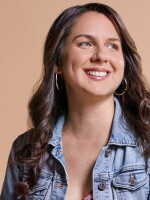RACHEL MARTIN, HOST:
There's a common misconception about youth that when you're in your 20s or even your 30s, you're carefree and adventurous, not yet anchored down by the limitations and responsibilities of middle age. But a lot of people in this age group feel unfulfilled and lost. Marielle Segarra of NPR's Life Kit has some tips for how to balance freedom and adventure with stability.
MARIELLE SEGARRA, BYLINE: Often in this period called quarterlife, people feel unsettled, stuck at a job they hate or in a city that doesn't feel like it fits.
SATYA DOYLE BYOCK: You feel like, wait - this is what I've been working towards? This is what all of childhood seeks to achieve is this?
SEGARRA: Satya Doyle Byock is a psychotherapist in Portland, Ore. And she wrote a book called "Quarterlife: The Search For Self In Early Adulthood." She says one of the biggest challenges for quarterlifers is a tug of war between meaning and stability. Meaning, she says, is a feeling of openness, freedom and adventure, whereas stability is safety and groundedness.
DOYLE BYLOCK: A person might both want to feel like they're fancy free and alone and living the single life and also long to be married with children. And it's so confusing to feel these truly opposing desires showing up inside of us.
SEGARRA: There are illustrations in the book that get at this. Meaning is fire, which on its own can rage uncontrollably. And stability is the fireplace, which you don't want to have sitting empty.
DOYLE BYLOCK: We need both. We need a sense of containment for that fire and warmth and bounty in our lives.
SEGARRA: In the book, Doyle Byock lays out a few ways that we can find a path forward in quarterlife and bring these opposing sides of ourselves together. The first is separation. It's about understanding the forces that have shaped you and launching out on your own.
DOYLE BYLOCK: The sort of invisible hooks of childhood, of our parents, of a church we may have grown up in or a certain culture we were raised in. Those hooks linger, and they can linger for decades and decades if we don't really attend to them.
SEGARRA: Sometimes separation is literal. You move out of your parents' house or break up with a partner. But even if not, it's about creating a separate existence outside of these relationships. Then there's listening. That's about trusting ourselves, paying attention to what our bodies feel, to the dreams we have at night and following those little breadcrumbs of joy.
DOYLE BYLOCK: That food that we love, that music that we adore - really trying to allow each person to attend to those nuances and to start learning about themselves again in a way that's quite contrary to most social messages, which suggests it's narcissistic or overly self-involved.
SEGARRA: Another concept in the book is building, creating the life that we want. For people who are hyperfocused on stability, there might be some demolition that happens first. Maybe that means taking a sabbatical from work or switching to a different kind of job that doesn't suck the life out of you. Meanwhile, the people who lean towards meaning and adventure might need structure and routine. You want to be a writer? Start writing every day. That's building.
DOYLE BYLOCK: So building one's life often requires discipline and effort that manifests in the external world what it is we might be feeling or kind of invisibly experiencing in the internal world.
SEGARRA: Ultimately, Doyle Byock says the goal is to bring the meaning and stability sides of ourselves together. And maybe that's some of the joy of getting older.
For NPR News, I'm Marielle Segarra. Transcript provided by NPR, Copyright NPR.


